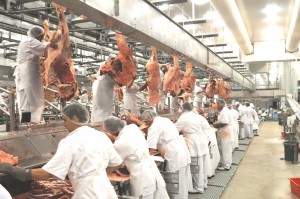Background: Hand hygiene is one of the most effective preventive measures in the transmission of infection. Proper hand hygiene strategies in health care facilities can reduce nosocomial infections and antimicrobial resistance.
Objectives: This study aims to assess the baseline hand hygiene skills among health care workers and the impact of education and training on it. Design: Interventional cross-sectional single center study.
Method: It was conducted among 181 health care workers of Alka Hospital Pvt. Ltd. During both pre and post-test, participants were asked to perform hand hygiene with soap and water as per WHO guidelines. Pretest was conducted to assess baseline skills of health care workers regarding hand hygiene. An observer would score whether each of the steps were performed correctly, using a checklist. It was followed by intervention in the form of training, education and demonstration of hand hygiene. Post-test was conducted to assess the changes in skills after intervention. Results: There was an overall improvement in the hand washing skills post intervention indicated by an increase in median score, which was 8 for pre-intervention and 9 for post-intervention.
Doctors and nurses had better practice regarding hand hygiene in comparison to other participants. Those participants who had prior training on infection prevention and control, were found to have better hand hygiene skills post-intervention.
Conclusion: Training and educational interventions are the effective tools to improve hand hygiene skills of the health care workers. Performing such interventions at regular intervals can be helpful. Keywords: hand hygiene, health care workers, training and education.
Hand hygiene skills of the health care workers and the effect of training and educational intervention: A single center cross-sectional study
Bangladesh Critical Care Journal
Gentle Sunder Shrestha*1 , Manjit Shrestha2 , Roshan Sharma2 , Ramchandra KC3 , Bibeka Shrestha4 , Rojika Pradhan5 , Pankaj Joshi






 Gee’s Garden Bistro, 1145 N. Alvernon Way, Tuscon, Arizona, failed an unannounced restaurant inspection July 17. And a re-inspection July 27; and Aug. 8 and Aug. 21.
Gee’s Garden Bistro, 1145 N. Alvernon Way, Tuscon, Arizona, failed an unannounced restaurant inspection July 17. And a re-inspection July 27; and Aug. 8 and Aug. 21.